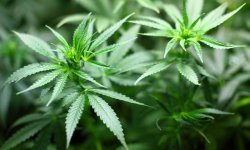What is the permissible THC content of the dried product? The answer seems relatively simple. However, with hemp, it is very often the case that the proverbial devil is in the details. How is the THC content of hemp dried calculated? How is the dried product tested by crime labs and customs? You will learn this and much more in the latest article on our portal.
What is the permissible content of THC in the dried product? What do the regulations say about it?
The Anti-Drug Law describes the permissible content of delta-9-THC in cannabis seeds exactly as follows:
"...the sum of the content of delta-9-tetrahydrocannabinol (THC) and tetrahydrocannabinolic acid (delta-9-THC-2-carboxylic acid, or THCa) in the flowering or fruiting tops of plants from which the resin has not been removed, does not exceed 0.20% on a dry weight basis" Sounds unambiguous, but in practice the matter is not at all that simple....
This is because at least three issues raise doubts:
What does the statement "on a dry weight basis" mean?
Do we give the sum of delta-9-THC and delta-9-THCA directly as a sum or in the "American" way, i.e. delta-THC +0.87 delta-9-THCA?
What about the measurement uncertainty? To report or not to report? Does it count towards the total or not?
For the first point, from the laboratory's point of view, the regulations are interpreted literally, i.e., the so-called dry mass by definition is the mass of the substance devoid of water. Any sample delivered to the laboratory should be dried to a constant weight at a temperature below 70C (so as not to accelerate decarboxylation of the acid forms of cannabinoids).
More favorably from the point of view of the producer/importer of dried hemp, the situation is presented by the guidelines included in the "EU method for quantification of delta-9-THC content in hemp varieties" (Annex to the Commission Delegated Regulation (EU) 2017/1155 of February 15, 2017). According to its provisions, hemp should be dried at a temperature below 70C to a constant weight and achieve a moisture content in the range of 8-13%. Problematic in the aforementioned provisions is the drying of plant material to a constant weight while achieving a moisture content of 8-13%. It is only possible to dry the sample and then convert the results for the obtained mass to a water content of 8-13%.
Why is this advantageous?
If in the tested sample we obtain a water content of, for example, 10%, then at the same time the delta-9-THC content in the sample will be 10% lower - that is, if the sample reaches the law enforcement authorities, who will follow the EU interpretation of the law on this issue, then legally "a higher delta-9-THC content" in cannabis will be allowed.
At this point the question must be asked:
"How do crime laboratories and customs offices in Poland test samples?"
I asked this question to all units of this type in Poland. I received answers, which can be summarized by saying that the methodologies used vary quite considerably in different laboratories, i.e:
Drying temperature: ranging from room temperature, through 35°C, 70°C, even up to 105°C, and the associated
Drying time: inversely proportional - between 48 and 3 hours, possibly until the "plant material becomes brittle."
In conclusion, the lack of clear guidelines (standards) causes a kind of mess in the laboratory practices used. For us, the most important thing is the welfare of the client which, in our understanding, leads us to follow the provisions of the Anti-Drug Law, in order to avoid potential legal charges for exceeding the legally permitted level of delta-9-THC in the material in our possession.
As a second point of concern, when importing dried material from abroad, whether as a result of other local laws or an attempt at simple fraud, test reports received from manufacturers/exporters often either lack delta-9-THCA content at all or it is there, but the vendor assures that only delta-9-THC content is important or the sum of delta-9-THC is calculated in the following ratio:
delta-9-THC and delta-9-THCA = 0.87delta-9-THCA + delta-9-THC
Where:
0.87-is the literature molar ratio of delta-9-THCA to delta-9-THC decarboxylation.
Fortunately, this is not a rule. When it comes to calculating the permissible delta-9-THC content, the law is clear that it is the sum of delta-9-THC and delta-9-THCA. It does not mention the conversion of the acid form to the decarboxylated form.
In summary, therefore, on our reports, the total delta-9-THC content of a sample is always reported as the direct sum of delta-9-THC and delta 9-THCA without the use of a multiplier.
The third contentious issue concerns the presentation of measurement results with so-called uncertainty. Every measurement has a so-called uncertainty.
Uncertainty is, by definition, the spread of values that can be reasonably attributed to the measured quantity.
In human terms, one could say that it is an acceptable "error" of the laboratory. But... that's not quite the case. It does not mean that once sending the same sample to the laboratory, you will get the result of the determination once 0.17% and the next time 0.23%. This is because uncertainty is a mathematically calculated parameter, which consists of very many factors. In the case of delta-9-THC at a concentration level of 0.20%, Cannalabs' uncertainty is +/- 0.03%, which is consistent with the EU method for quantifying delta-9-THC in cannabis strains cited above, which allows a "tolerance" of just 0.03%.
If a lab can't provide an uncertainty for its measurement, it means it's working with an unvalidated (untested, with proven performance) procedure.
But why do I mention this?
It is worth being aware that the result of a measurement is not a single point, but a range of values ie. for example:
if the minimum required sugar content in sugar is 96%, and our result is 95% +/- 3%, it means that the result meets the requirement.
Similarly, if the example result obtained for delta-9-THC content was 0.25% and the measurement uncertainty was 0.05%, it would be considered that the result complies with the Anti-Drug Law.
However, there are several "buts."
Police laboratories do not provide uncertainties. Even if they did provide - it would be different for each forensic laboratory.
The court, as a rule, does not understand the concept of uncertainty and treats the result as a point - here the role of the lawyer is important.
In conclusion, in the case where the police seized a batch of dried drug and according to the results of the forensic laboratory, the value of the sum of delta-9-THC and delta-9-THCA in the dried drug is slightly exceeded, i.e. up to 0.25%, you can try to defend yourself with "uncertainty", because the fact that the police laboratory did not report it, does not mean that it does not exist.
The author of the article is Marek Klein of EkotechLab / Canna Labs, creator of the Golden Cannabis certification program for hemp products


















